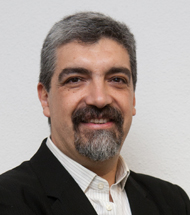Diego Maza Ozcoidi, Professor of department of Physics and Applied Mathematics of the University of Navarra
Applied Physics

It was 1987 when my professor of "Applications of Laser Physics" at the National University of San Luis (Argentina) was updating us on some of the advances he had heard about at congress. award Among them was a technique for "trapping" atoms -which eventually led to its author, Steven Chu, sharing the 1997 Nobel Prize in Physics-. Twenty-one years later, his "spin-off" (to use a language in keeping with the times), the work of his disciple Arthur Ashkin, has once again made history by winning the Nobel Prize yesterday.
Almost simultaneously with the classes taught by my dear teacher, Ashkin was fine-tuning his "optical tweezers", a device for which he now shares the top prize award of science with two other researchers.
The relevance of finding is not so much due to its novelty -which is also new- as to the great issue of inventions and applications that have been derived from it. The possibility of manipulating objects on a molecular scale -such as DNA strands- has opened up innumerable avenues of research, most of which are only recently producing their first results.
In that subject (which I miss even more today) we also discussed the first steps of nonlinear physics. Specifically, on nonlinear optics. This immense field - which has led Ashkin to share the Nobel Prize with Gérard Mourou and Donna Strickland - already promised endless possibilities. Among them, some have become reality, such as the generation of high-intensity light pulses for very precise measurements on a universal scale.
This finding sounds impressive, and indeed it is. However, the principles on which it rests were previously known to the academic community. What happened is that thanks to the ingenuity of Mourou and Strickland, the abstract ideas became a manageable reality at laboratory, upon which to explore new frontiers of knowledge.
In my case, I have never believed that intelligence was the patrimony of a certain color, Rh factor, religious idea and, much less, of the sex to which one belongs. So I am not going to fall into the demagogic temptation of talking about what I am sure many will talk about today (Donna Strickland is the third woman to receive the Nobel Prize in the history of these awards). I would like to take the opportunity to add a reflection staff on another truly relevant background: the development of applied physics.
It may seem obvious (at least to our "hyper-technified" West) that applied ideas are the lifeblood of the sustainable development . However, the "applications" of these ideas almost always come much later. In fact, manipulating viruses under goal - a breakthrough made possible by the 2018 Nobel Physics Laureate development - has only been achieved with the passage of decades of work, the results of which are nowhere near as appealing as the image of tweezers unraveling a DNA strand.
That is why, perhaps, this Nobel Prize in Physics honors the premises that gave meaning to award and to Alfred Nobel's own work : basic science as a substrate for applied science.
